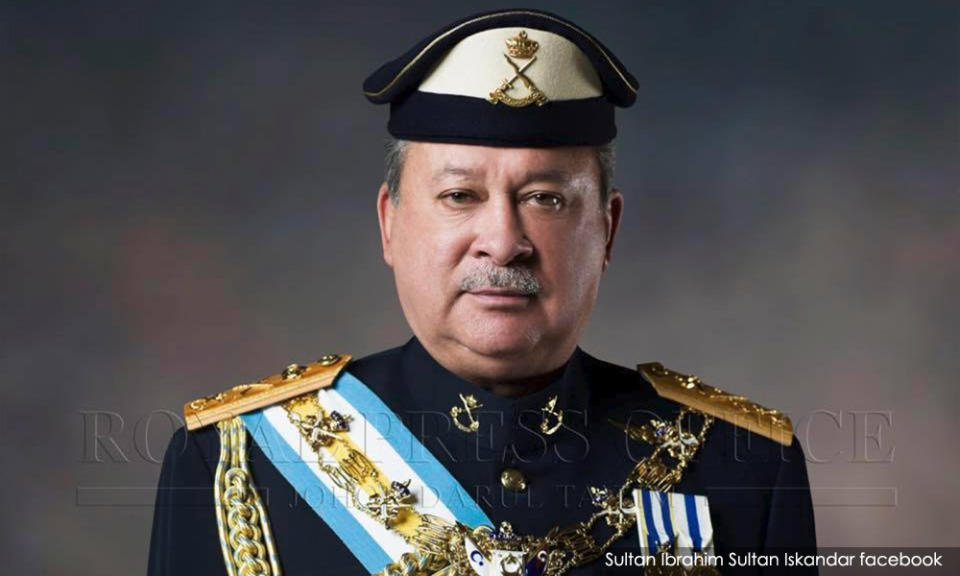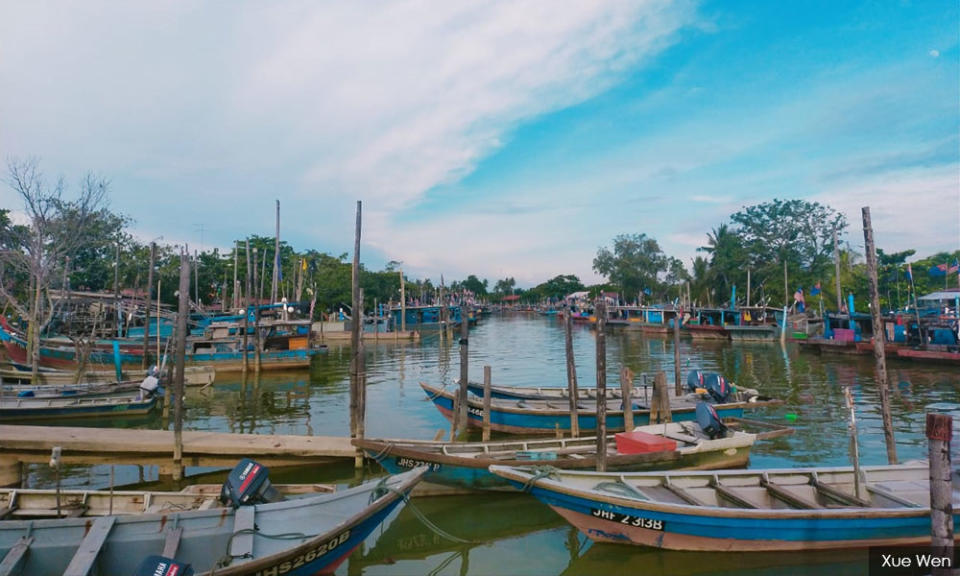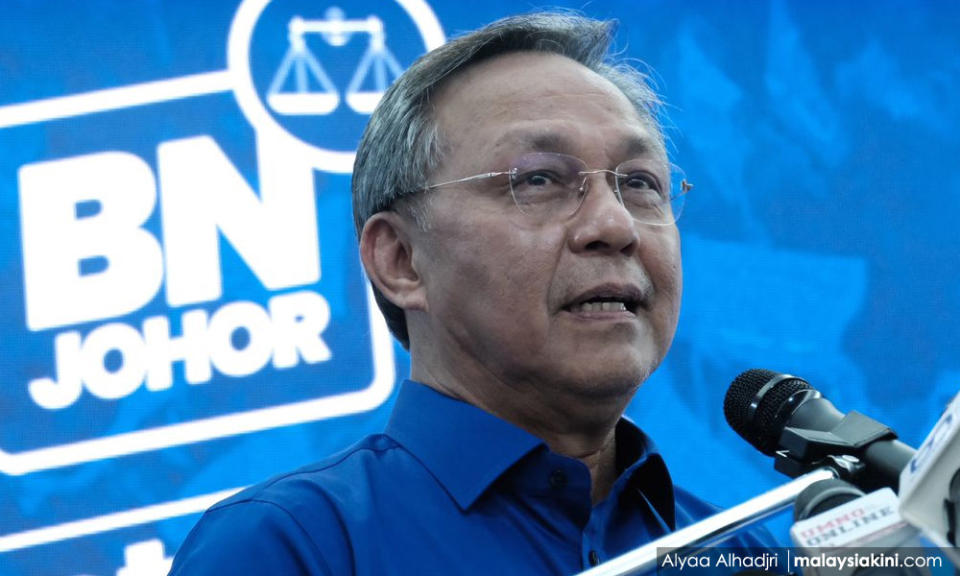Johor sultan's sea reclamation venture expands to Muar

A new sea reclamation project off the coast of Muar in Johor, owned by Johor ruler Sultan Ibrahim Sultan Iskandar, could begin as early as this year.
The size of the venture will be similar to that of the Forest City project in the Johor Straits, which the Johor ruler also has a stake in.
The new project in the Malacca Straits won't go the way of Forest City which sought to build an integrated residential development that sold to a global market, and was particularly popular among Chinese nationals, but is now struggling due to Beijing's offshore investment curbs imposed on its citizens.
The latest project, dubbed the Maharani Energy Gateway, aims to create an energy hub and deepsea port which involves the creation of three man-made islands covering an area of 1,295 hectares, about a quarter of the size of Putrajaya.
In contrast, the Forest City project is about 1,370 hectares - scaled down from nearly 2,000 hectares following reports in 2014 that it tried to circumvent the detailed environmental impact assessment (DEIA) process.

The Maharani Energy Gateway is going by the book from the onset and its environmental impact assessment (EIA) became available for public viewing on Feb 14, under a caretaker government, and will be accessible until next Tuesday (March 15).
Efforts to push through the project started early last year, with the incorporation of Maharani Energy Gateway Sdn Bhd (MEGSB) on March 25 last year. Its website was registered six days later, according to domain data.
MEGSB, with a share capital of RM10,000,000, will be the project owner.
Checks with the Companies Commission of Malaysia (CCM) showed MEGSB is 55 percent owned by the royalty-linked D Marine Industries Sdn Bhd while the remaining 45 percent stake is held by K Energy Sdn Bhd.
Sultan has 38.5pct effective stake
The majority shareholder in D Marine Industries is Johor ruler Sultan Ibrahim Sultan Iskandar with a 70 percent stake.
The other 30 percent is held by a familiar name - Daing A Malek Daing A Rahaman.
Malaysiakini had in 2014 explored Daing A Malek's prominent role in the Johor royalty's business interests and his involvement in the Royal Court of Advisers to the Johor sultan. Eight years on, his clout remains strong.
The share structure for the Maharani Energy Gateway project is similar to that of the Forest City, in which Daing A Malek was similarly a co-shareholder with the Johor ruler.

Under the share structure for Maharani Energy Gateway, the Johor ruler controls an effective stake of 38.5 percent, the highest among all stakeholders. Daing A Malek has an effective stake of 16.5 percent.
K Energy's 45 percent stake gives their equal co-owners Eric Ong Zong Ren and Valerie Ong Huei Zhen an effective control of 22.5 percent each.
Little attention had been paid to the EIA due to the Johor state election, which has been seeing a flurry of political activities since the state assembly was dissolved on Jan 22. Campaigning officially kicked off on Feb 26 and Johoreans will vote this Saturday, March 12.
However, the incumbent local assemblypersons in the area - Maharani's Nor Hayati Bachok and Bentayan's Ng Yak Howe - said they were not consulted prior to the EIA process and have only caught wind of it recently.
"We urge the government and developer to engage us as the stakeholders representing the people. A mega project on this scale would have surely taken a long time to plan before it reached the stage of displaying the EIA report for public viewing.
"Throughout our tenure as assemblypersons since May 2018, no information about the project have been channelled to our offices," Nor Hayati and Ng said in a statement.
MEGSB's EIA report said their consultants interviewed and surveyed 482 respondents and a majority were in favour of the project. However, Nor Hayati and Ng maintained that few residents know about it.
They expressed concerns over how the project would impact the livelihood of fishermen and urged members of the public to review the EIA and provide feedback.
Speedy approvals
The process to turn the land reclamation project into reality made considerable progress under incumbent Menteri Besar Hasni Mohammad, so much so that the draft Johor Structure Plan 2030 was modified to accommodate the reclamation project.
On June 21, 2021, less than three months after MEGSB was set up, the Muar Land Office wrote to the royalty-owned D Marine Industries Sdn Bhd informing that it has been granted the 1,295 hectares of sea land needed for the reclamation.
The grants for the lands, namely, PTD233572 (607 hectares), PTD7682 (607 hectares) and PTD 6758 (81 hectares) were for perpetuity and the premium was to be at "market price", although no amount was stated in the letter, which was included as part of the EIA report.
Fifteen days later, on July 6, 2021, the Johor state executive council under Hasni gave consent for the project. The decision was conveyed to MEGSB in a letter dated July 29, 2021.
On Nov 5, 2021, the addendum report to the draft Johor Structure Plan 2030 went on public display. The modification, among others, was to account for the development of an oil and gas industry off the shore of Muar.

In a letter dated Jan 10, the Johor Town and Rural Planning Department informed MEGSB about the conclusion of the month-long public objection process for the amended draft Johor Structure Plan 2030.
However, it said the document would need to go before the Johor executive council before it can be gazetted. It also revealed that the matter would be considered on Jan 27.
The state assembly was dissolved on Jan 22 and this was gazetted on Jan 23. It is unclear if the caretaker Johor government proceeded with a decision on Jan 27.
However, the department informed MEGSB that in the meantime, it can proceed with the EIA process.
The reclaimed locations
According to the EIA document, the first 607 hectares of reclamation will take place at 2.37 nautical miles (4.4km) from the coast of Muar town.

Referred to as Plot A, the goal is to begin reclamation this year and have it completed by 2028. It will serve as an oil and gas storage and host blending facilities.
The second reclamation, also 607 hectares, will take place 1.03 nautical miles (1.9km) off the coast of Parit Bakar, located to the south of Muar town.
Referred to as Plot B (PTD7682), the reclamation is expected to start in 2023 and last until 2027. This man-made island will host a petrochemical plant, refinery and power plant.

The reclamation for Plot C (PTD6758) will be 0.41 nautical miles (0.76km) off the coast of Kampung Sri Menanti, a coastal village located in between Muar and Batu Pahat.
Covering an area of 81 hectares, reclamation is planned to begin in the third quarter of this year until the third quarter of 2023. It will host facilities for shipbuilding and repair services.
Development of the man-made islands is expected to start in the third quarter of 2023 and will extend into 2036.
There will also be an onshore development referred to as Plot D (PTD10498 and PTD10499) to the south of Kampung Sri Menanti, which will involve the construction of a regasification station and a floating liquefied natural gas terminal.
The site, involving an area of about 16.2 hectares, has mangroves growing, but it is not gazetted as a protected area.
"The estimated size of the mangrove area that will be lost to make way for the project is 16.203 hectares (Plot D).
"The area, however, is experiencing serious mangrove dieback with an estimated 70.8 percent degradation," the project's EIA report said.
Mangroves and fishermen
It added that the wider area of mangroves may also face degradation during the project but are expected to return to normal post-reclamation.
The mangrove belt off the coast of Muar ranges from Tanjung Ketapang to Parit Semerah.
Other local features that could be affected include the 13 fishing jetties from Sungai Muar to Tanjong Tohor that could see sedimentation build up during the reclamation exercise.

The report estimates there are 935 fishermen with 418 vessels in the area.
There is also Pantai Mesra Seri Menanti which the report noted is a recreation area that is "only for sightseeing".
This is on top of aquaculture activities in the area (including mussels, shrimps, tilapia and clams) as well as 22 togok (fishing traps) in the shore area.
The EIA report states: "Fishermen who routinely fish in the affected area will have to find other locations.
"The additional cost of fishing involves the increase in the cost of travelling to and back from the alternative fishing ground.
"They may have to travel further afar because conflicts may arise as they encroach into traditional fishing grounds of the existing fishermen.
"The aquaculture activities are expected to be less affected by the project activities. During the post-reclamation, the seawater quality for suspended sediment concentration is expected to be back to the baseline concentration."
The report said it surveyed 101 fishermen about the project and most of them (49) had no opinion while 23 agreed with the proposal.
The project is estimated to have a gross development value of RM99 billion over 10 years. It is also expected to generate 26,769 jobs over the same period, according to the report.

Hasni, during the Johor state polls campaign, touted his plan to turn Muar into an oil and gas hub if BN wins the election.
The Maharani Energy Gateway project is also part of the Johor BN manifesto.


